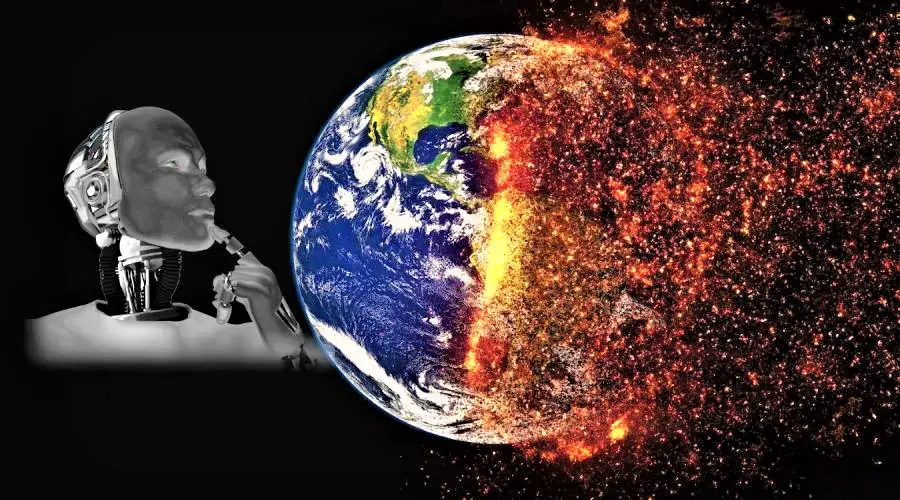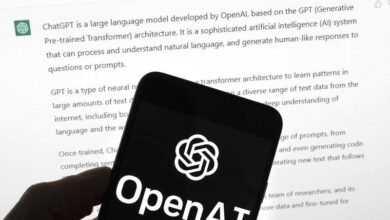Artificial intelligence based solutions for climate change -Kat Technical
Artificial Intelligence for Climate Change Risk Prediction, Adaptation, & Mitigation

Climate change is one of the most pressing challenges humanity faces today. As greenhouse gas emissions continue to rise and the effects of global warming become increasingly evident, innovative solutions are required to mitigate the impacts of climate change. Artificial Intelligence (AI), with its remarkable capabilities in data analysis, pattern recognition, and optimization, is emerging as a powerful tool in the fight against climate change. This article explores the various ways in which AI is being utilized to address climate change mitigation efforts across different sectors.

As the global climate crisis intensifies, the need for effective strategies to predict, adapt to, and mitigate climate change risks has become paramount. In this context, Artificial Intelligence (AI) emerges as a transformative tool that offers invaluable insights and solutions. AI’s ability to process vast amounts of data, identify patterns, and make informed decisions in real time has opened new avenues for addressing climate change challenges comprehensively. This article delves into the role of AI in climate change risk prediction, adaptation, and mitigation.
Climate Modeling and Prediction:
AI-powered climate models have the potential to enhance our understanding of complex climate systems and improve prediction accuracy. Machine learning algorithms analyze vast amounts of historical climate data to identify patterns and relationships, enabling more accurate predictions of future climate scenarios. These predictions help policymakers and scientists make informed decisions regarding climate change mitigation strategies.
Renewable Energy Optimization:
The transition from fossil fuels to renewable energy sources is a crucial step in reducing carbon emissions. AI plays a pivotal role in optimizing the generation, distribution, and consumption of renewable energy. Smart grids, enabled by AI algorithms, can manage energy supply and demand efficiently, minimizing waste and reducing reliance on non-renewable sources.
Energy Efficiency and Consumption:
AI-powered systems are used to monitor and control energy consumption in various sectors such as buildings, transportation, and manufacturing. Machine learning algorithms analyze data from sensors and devices to identify energy-saving opportunities. This allows for the implementation of strategies that reduce energy consumption and associated greenhouse gas emissions.
Carbon Capture and Sequestration:
AI-driven technologies are being developed to enhance carbon capture and sequestration processes. These technologies optimize the efficiency of capturing carbon dioxide emissions from industrial processes and power plants. AI can also help identify suitable geological formations for long-term carbon storage.
Agriculture and Land Use:
AI is being utilized to improve agricultural practices and land use management. Precision agriculture techniques, powered by AI, enable farmers to optimize resource allocation, reduce waste, and enhance crop yields. Additionally, AI can analyze satellite imagery and data to monitor deforestation, urbanization, and other land use changes that contribute to climate change.
Climate Adaptation Strategies:
AI assists in developing adaptive strategies to address the impacts of climate change. By analyzing climate data and historical patterns, AI can help identify vulnerable regions and populations, enabling better planning for infrastructure, disaster response, and resource allocation.
Climate Finance and Risk Assessment:
AI-driven tools are used for assessing climate-related financial risks. Machine learning algorithms analyze large datasets to evaluate the potential impacts of climate change on investments and portfolios. This information aids investors, insurers, and policymakers in making informed decisions to manage climate-related risks.
Monitoring and Enforcement:
AI technologies are employed for monitoring compliance with environmental regulations. Drones, satellites, and sensor networks equipped with AI can detect and report illegal logging, pollution, and other activities that contribute to environmental degradation.
Climate Change Risk Prediction:
AI’s predictive capabilities are instrumental in assessing and understanding climate change risks. Machine learning algorithms analyze historical climate data, satellite imagery, and other relevant information to identify trends and correlations. This enables accurate predictions of extreme weather events, sea-level rise, and other potential consequences of global warming. By anticipating these risks, policymakers can formulate proactive strategies to minimize their impact on communities, infrastructure, and ecosystems.
Early Warning Systems:
AI-powered early warning systems play a critical role in disaster preparedness and response. These systems can rapidly process data from various sources, such as meteorological sensors and social media, to detect and forecast natural disasters like hurricanes, floods, and wildfires. Timely alerts and real-time updates help authorities and residents make informed decisions, evacuate vulnerable areas, and allocate resources effectively.
Climate Change Adaptation:
Adaptation is essential to build resilience against climate change impacts that are already underway. AI contributes significantly to adaptation efforts by analyzing diverse data sets to identify vulnerabilities and develop tailored strategies. For instance, AI can assist urban planners in designing climate-resilient cities by optimizing infrastructure layouts and green spaces to mitigate heat islands and flooding risks.
Sustainable Agriculture and Resource Management:
AI-enhanced precision agriculture techniques enable farmers to optimize crop yields while conserving resources. By analyzing data from sensors, satellites, and historical patterns, AI suggests optimal planting times, irrigation schedules, and pest control methods. This reduces waste, conserves water, and enhances food security amidst changing climatic conditions.
Infrastructure Resilience:
AI-driven simulations and modeling are used to design and retrofit infrastructure for climate resilience. Bridges, buildings, and transportation systems can be optimized to withstand extreme weather events, reducing damage and ensuring public safety. AI’s ability to process large datasets helps engineers create more robust and adaptable structures.
Mitigation Strategies:
AI plays a vital role in devising effective strategies to reduce greenhouse gas emissions and mitigate climate change. Machine learning algorithms analyze energy consumption patterns to identify areas where efficiency improvements can be made. Additionally, AI optimizes energy distribution and consumption in smart grids, increasing the integration of renewable energy sources and reducing reliance on fossil fuels.
Carbon Capture and Sequestration:
AI is instrumental in improving carbon capture and sequestration technologies. By analyzing geological data, AI identifies suitable locations for carbon storage and optimizes injection rates to enhance long-term efficacy. This contributes to efforts to offset emissions and combat climate change.
FAQs:
What is the role of Artificial Intelligence (AI) in climate change mitigation?
AI plays a crucial role in climate change mitigation by analyzing data, predicting climate risks, optimizing resource usage, enhancing renewable energy adoption, and supporting adaptive strategies.
How does AI help predict climate change risks?
AI processes historical climate data and patterns to predict extreme weather events, sea-level rise, and other climate-related risks, enabling proactive planning and disaster preparedness.
Can AI assist in early warning systems for natural disasters?
Yes, AI-powered early warning systems process real-time data from various sources to detect and forecast natural disasters like hurricanes, floods, and wildfires, enabling timely alerts and effective responses.
How does AI contribute to climate change adaptation?
AI identifies vulnerabilities in various sectors, such as urban planning and agriculture, and helps design adaptive strategies to build resilience against changing climatic conditions.
In what ways does AI promote sustainable agriculture and resource management?
AI-powered precision agriculture optimizes crop yield, reduces resource consumption, and enhances food security by analyzing data for optimal planting, irrigation, and pest control.
Can AI improve infrastructure resilience to climate change impacts?
Yes, AI-driven simulations and modeling help design and retrofit infrastructure to withstand extreme weather events, ensuring public safety and minimizing damage.
How does AI support greenhouse gas mitigation efforts?
AI analyzes energy consumption patterns, optimizes energy distribution in smart grids, and improves carbon capture technologies, contributing to the reduction of greenhouse gas emissions.
What ethical considerations are important in deploying AI for climate change mitigation?
Ethical concerns include data privacy, equitable access to AI solutions, and ensuring that AI technologies are used responsibly and transparently to benefit all communities.
How is AI integrated into climate policy-making?
AI assists policymakers by providing data-driven insights, modeling scenarios, and evaluating the effectiveness of different climate change mitigation strategies.
What is the future potential of AI in climate change mitigation?
The future holds immense potential for AI to further revolutionize climate change mitigation through advanced data analytics, improved prediction accuracy, and innovative solutions across diverse sectors.
Is AI a substitute for traditional climate change efforts?
No, AI complements traditional efforts by providing data-driven insights and optimization solutions, enhancing the effectiveness of climate change mitigation strategies.
How can individuals contribute to AI-driven climate change mitigation?
Individuals can support AI initiatives by advocating for responsible AI deployment, promoting data-sharing for research, and adopting sustainable practices in their daily lives.



